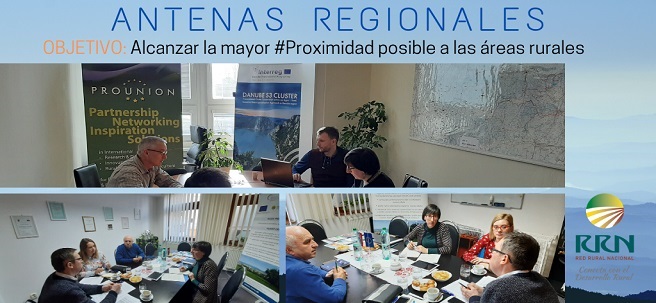
09 de March de 2020
March 9, 2020. The goal is to achieve the greatest possible proximity to rural areas. The Regional Antennas' work will focus on understanding the different regional realities, identifying best-practice projects, organizing activities, and improving the dissemination of RRN content.
The National Rural Network recently traveled to Slovakia to meet with counterparts from the Management Unit (NSU) and the Regional Antennas (RA) of Nitra, Trencin, and Trnava. The trip was intended to gather as much information as possible on the functioning and organization of the Slovak Regional Antennas—which have been operating in that country since 2007–2013—for the implementation of the regional antenna model in Spain.
The Spanish National Rural Network plans to begin working with nine Regional Antennas in the coming weeks. To this end, the territory has been divided into Autonomous Communities. Some of the Antennas will have to serve more than one Autonomous Community. The Regional Antennas will work closely with the National Rural Network Management Unit and with stakeholders in the region.
Slovak model
The RAs are recognized private consulting firms in the field of Rural Development and fully integrated into the structure of the Slovak NRN. Rural Development in Slovakia is the responsibility of the national government, and they have a single Rural Development Program (RDP).
The functions of the Slovak ARs are:
- Disseminate PDR information through cooperation and promotion of activities.
- Organize training for PDR beneficiaries.
The eight existing ARs operate with a unified methodology that consists of developing an annual action plan, consisting of three types of actions:
- Education and knowledge dissemination activities: Seminars, training, etc.
- National work and transnational cooperation: Thematic working groups; exchanges of good practices; meetings with interlocutors, beneficiaries, and stakeholders; study visits; participation in NRN or ENRD activities, etc.
- Promotion: Exhibitions, fairs, PDR promotion activities, media promotion, etc.
The Regional Antennas work closely with each other and are in constant contact with the Local Action Groups, thereby achieving greater proximity with stakeholders and beneficiaries in the region on rural development issues.
The activities carried out by one antenna can be replicated in the territory of other antennas when the subject matter is of interest to the public in that territory.
Conclusions
The existence of the Regional Antennas model in Slovakia allows for expanded dissemination capacity for the activities of the Slovak National Rural Network. Likewise, the work is more tailored and appropriate to the needs of each rural region.
Thus, the Regional Antenna allows the Slovak National Rural Network to have greater proximity and closeness to the territory in which it operates.
These results have motivated RRN to work with nine regional antennas in the coming weeks.











